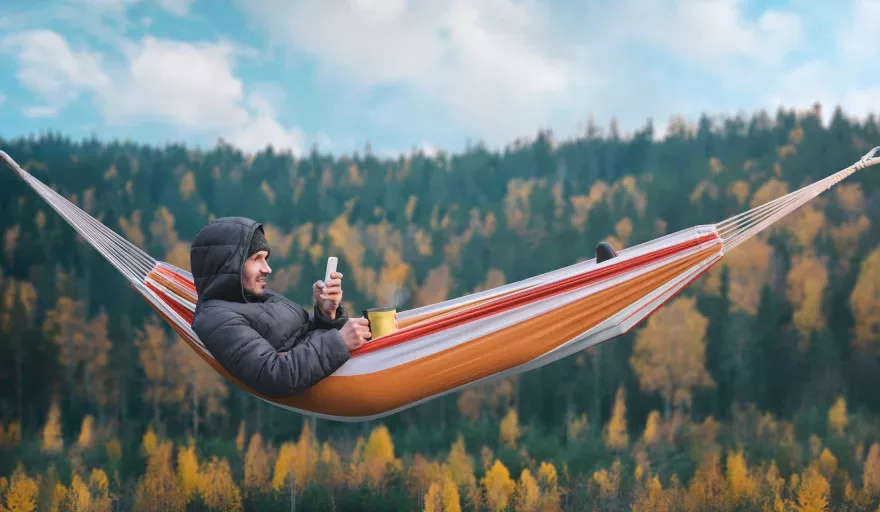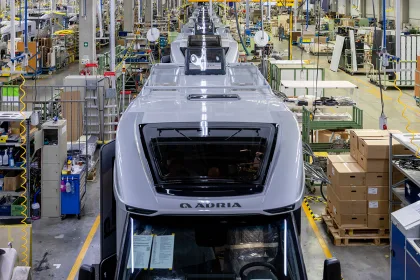Announced as the European Commission’s Green Capital of 2021, we take a closer look at Lahti, the Finnish city championing eco-innovation, low-carbon lifestyles and a circular economy.
INTRODUCTION
Found within supposedly the happiest nation in the world and just an hour’s drive from the capital of Helsinki, the Finnish city of Lahti is relatively unknown. 2021 is the year that is set to change, as the city’s reputation as a stalwart of environmental action has secured Lahti a prestigious title that will likely prove a boon to both tourism and interest in the city.
The European Green Capital Award was launched in 2008 to reward cities that demonstrate an admirable commitment to sustainable development and environmental improvement. In true COVID style, the Finnish city was announced as the winner of the esteemed award in an online ceremony on the 15th of January, virtually attended by the President of the Republic of Finland, Mr Sauli Niinistö, and EU Commissioner for the Environment, Oceans and Fisheries Mr Virginijus Sinkevičius.
WHERE IS LAHTI?
In a country renowned for its spectacular natural landscapes, swatches of forest and crystal clean waters, Lahti does benefit from a natural geographical advantage. The city’s name translates literally as the ‘bay’, referring to its scenic position on the edge of Finnish Lakeland.
Although it may be known as the ‘Chicago of Finland’, the city’s compact size works in favour of its environmental goals. As Finland’s ninth-largest city, Lahti has a modest population of just 120,000 inhabitants. It is hardly a monstrous metropolis, which would no doubt impede its environmental strides. Previously a traditional industrial town, it has reinvented itself as a green city.
It is the 12th city to receive the award, in good company alongside previous winners including Lisbon, Copenhagen, and Bristol. The award is recognition from Brussels that acknowledges cities with impressive environmental records. With the title comes the responsibility of acting as Europe’s green ambassador for the year, and a cheque for €350,000 that will be used to implement changes as part of the ‘Green Capital Project’.
WHAT MAKES A SUSTAINABLE CITY?
Within the framework of Europe’s target to become carbon neutral by 2050 – and Finland’s aim to make the nation net-zero by 2035 – Lahti is strides ahead. The small city is on track to achieve this goal in just four years’ time.
Through examining some of the initiatives that Lahti enforces, we see how the city practices a wholistic vision of sustainability that is championed on every level, whether through affecting behavioural change or implementing sustainable production. The small changes practiced within private households are regarded just as importantly as major initiatives launched at industry level.
Businesses have long employed the city’s geographical location to their advantage, incorporating natural resources wherever possible. The city’s proximity to the pristine waters of Lake Vesijarvi is advantageous in the provision of local produce, rich with the fish that are served in local restaurants. This water is also the lifeblood of the Hartwell brewery and other smaller distilleries within the city’s vicinity.
In the winter months, the surrounding slopes and pine forests of the Salpausselka ridge become a haven for winter sports, so much so that Lahti will propose a world-first urban ski-sharing scheme as it continues to pioneer carbon neutral means of transport.
On a residential scale, up to 99 percent of household waste is recycled, and both households and local businesses benefit from advanced waste separation practices. ‘Environmental grandparents’ have become a societal phenomenon, whereby elderly inhabitants teach young children about the environment, fostering a healthy respect and admiration from an early age.
In an age where practically everyone has a smartphone in their pocket, the CitiCAP app has been enormously popular in Lahti and other Finnish cities. Tackling the significant problem posed by mobility emissions in an urban environment, the app is designed to reward citizens for using environmentally friendly means of transport. Allocating individuals a personal CO2 emission budget for the week, the app tracks your means of transport and then rewards you with virtual euros if you have fallen below budget. This currency can be redeemed with tickets to the swimming pool, a bus ride or a puncture repair kit for your bike, alongside much more. The project, launched with EU funding, is significant in allowing residents to track their individual carbon footprint in real time and has proved to be an effective motivator.
Turning to the city’s businesses, across a myriad of sectors and industries, companies are operating with sustainable practices strictly entrenched into their operations.
Within hospitality, certain establishments are assigned a ‘Green Key’ to denote their environmental commitments, such as Solo Sokos Hotel Lahden Seurahuone, which hosts some of the city’s most influential visitors.
Within the manufacturing sector, Lahti has become a centre for cleantech businesses, employing approximately 5,000 people. The Kujala waste centre is central in producing raw material for asphalt that has been made from bitumen roof material that has been collected from across the country.
In terms of construction, a net-zero building developing centre is set to be launched, dedicated to the research of net-zero building codes and developing pilot programmes.
With regards to energy, in 2019 Lahti invested in a new bio plant to begin operation producing 100 percent renewable energy. Burning certified biomass, consisting mainly of wood chips and by-products from the foresting industry, the Kymijärvi III plant supplies the majority of the city’s residents with electricity and district heating.
In 2017, Lahti introduced a regional roadmap towards achieving a circular economy in Finland – the first of its kind. This continues to be at the core of city innovation as part of Lahti’s ‘Green Capital 2021’ project, thereby creating new and more sustainable business opportunities.
This comes as part of the EU’s ‘Circular Economy Action Plan’ which pioneers the transition away from the traditional linear model. This fosters sustainable economic growth through initiatives centred around the life cycle of products – from design and manufacturing to consumption, repair, reuse, recycling, and bringing resources back into the economy.
A good example of this is seen with the members of the Päijät-Häme Grain Cluster – a selection of food and drink companies that employ approximately 3,000 people in the Lahti area, charged with the production of foodstuffs such as bread and beer. Here, the combined benefits of green innovations and the circular economy are obvious. Finnish energy company St1 has joined forces with the beverage company Hartwall to create the bioethanol plant, Etanolix. Using food waste from the brewery and other grain industries, the plant produces bio-based fuels for vehicles. Meanwhile Fazer, a giant in Finland’s food and drink industry has begun to produce sweetener, xylitol, from oat hulls, previously a by-product.
What is evidenced by Lahti is the potential for technology to drive sustainability, championing environmental change on a commonplace level and revolutionising those micro daily actions that are so often disregarded as having little difference in the face of climate change. On Europe’s journey to carbon neutrality, Lahti has become a model worthy of imitation.


































